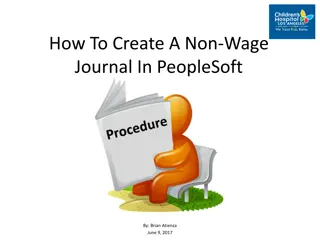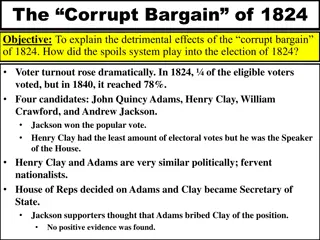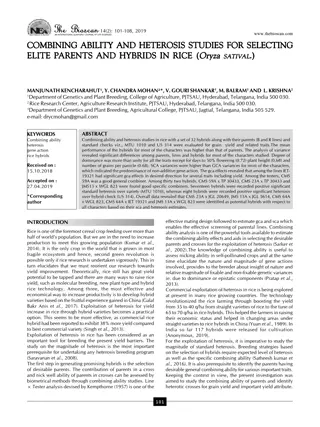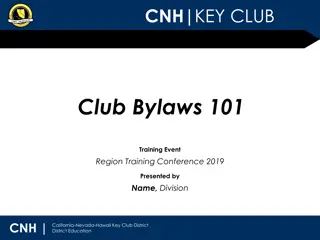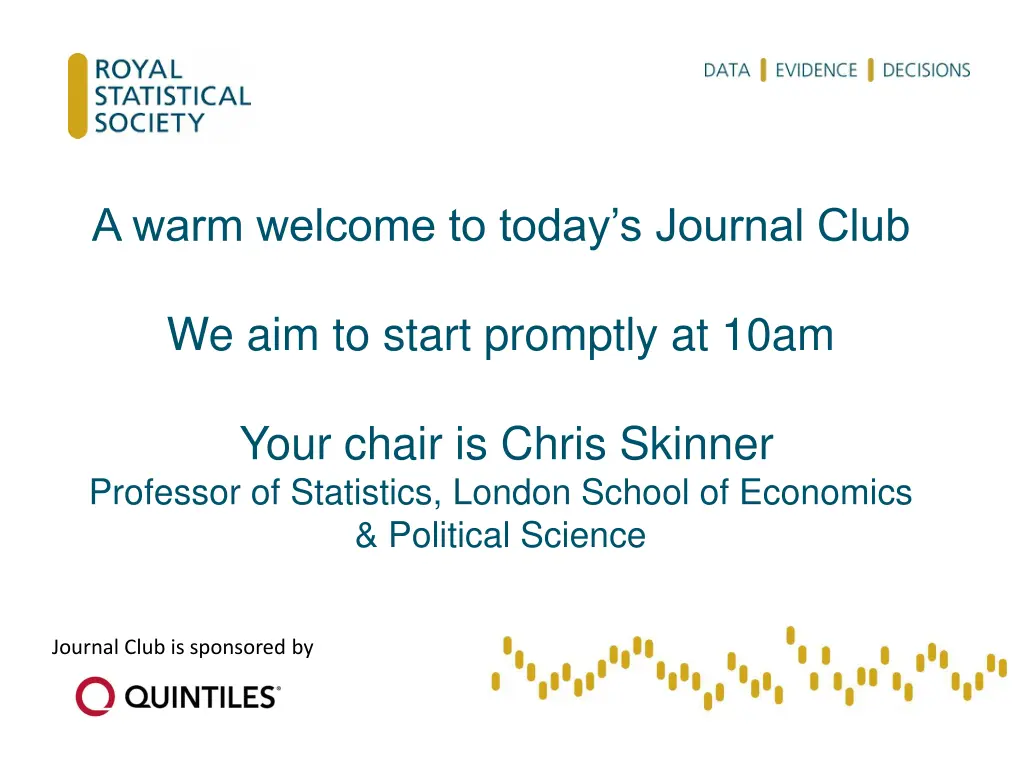
Modelling Criminal Behavior: The Item Count Survey Method
Explore a research study on predicting criminal behavior, specifically buying stolen goods, using the item count survey method. Learn about the importance of predictors like morality, financial need, and age in understanding criminal activities based on a sample survey data of 2549 individuals from three countries.
Download Presentation

Please find below an Image/Link to download the presentation.
The content on the website is provided AS IS for your information and personal use only. It may not be sold, licensed, or shared on other websites without obtaining consent from the author. If you encounter any issues during the download, it is possible that the publisher has removed the file from their server.
You are allowed to download the files provided on this website for personal or commercial use, subject to the condition that they are used lawfully. All files are the property of their respective owners.
The content on the website is provided AS IS for your information and personal use only. It may not be sold, licensed, or shared on other websites without obtaining consent from the author.
E N D
Presentation Transcript
A warm welcome to todays Journal Club We aim to start promptly at 10am Your chair is Chris Skinner Professor of Statistics, London School of Economics & Political Science Journal Club is sponsored by
During the Q & A sessions at the end of each presentation: Press *6 on your phone to speak Press *6 again after speaking (to mute phone) 2
The item count method for sensitive survey questions: Modelling criminal behaviour Jouni Kuha and Jonathan Jackson London School of Economics and Political Science Journal of the Royal Statistical Society , Series C, 63, pp. 321 341 (2013) RSS Journal Club Webinar, 20.11.2014 J. Kuha & J. Jackson Modelling item count data 20.11.2014 1/15
Motivation: A substantive research question Predictorsof criminal behaviour (today: buying stolen goods) Mainly interested in the following predictors, and their relative importance: Morality - how wrong is thecrime Financial need (also proxy for perceived benefits of crime) Age as a control variable Data from a 3-country survey , with n =2549 J. Kuha & J. Jackson Modelling item count data 20.11.2014 2/15
Survey questions on sensitive topics Direct questionson topicssuch as illegal behaviour may fail to elicit truthful answers One alternative: Methods of questioning which hide the answer from the interviewer Classical randomized response techniques(Warner 1965 onwards) Today: Theitem count (list experiment) technique(Miller 1984 onwards) J. Kuha & J. Jackson Modelling item count data 20.11.2014 3/15
Our item count question I am now going to read you a list of five [six]things that people may do or that may happen to them. Please listento them and then tellme how manyof them you havedone or havehappened to you inthe last12months. Do not tell me which ones are and not true for you. Just tell me how many you have done at least once. [Items included in both the control and treatment groups] 1. Attended a religious service, except for a special occasion like a wedding or funeral. 2. Went to a sporting event. 3. Attended an opera. 4. Visited a country outside [your country]? 5. Had personal belongings such as money or a mobile phone stolen from you or from your house. [Item included in the treatment group only] 6.Bought something you thought might have been stolen. Respondents are randomly assigned to control group: list of control items1 5 only , or treatment group: list of items1 6, includingsensitiveitem 6 J. Kuha & J. Jackson Modelling item count data 20.11.2014 4/15
Modelling item count data: Variables Define t is the group: t =1 for treatment group, t =0 for control Y isanswer to the sensitiveitem: Y =1 for Yes, Y =0 for No Z isthe total for the control items S =Z +tY isthe observed item count ... plusexplanatory variables x J. Kuha & J. Jackson Modelling item count data 20.11.2014 5/15
Counts in our data Numbers of respondents who report different total counts: Group Item count Total 0 1 4 5 6 2 3 Control 269 472 257 133 54 21 1206 Treatment 279 446 281 124 53 20 9 1212 J. Kuha & J. Jackson Modelling item count data 20.11.2014 6/15
Modelling item count data: Basic idea S = reported item count; Z = count for the control items Y = binary (0/1) variable of interest (1) In control group, S =Z, so thisgroup give information on the distribution of Z (2) In treatment group, S =Z +Y (3) Using (1), we can separate distributionsof Z and Y in (2), leaving an estimate of the distribution Y J. Kuha & J. Jackson Modelling item count data 20.11.2014 7/15
Modelling item count data: Simple methods S = reported item count Y = binary (0/1) variable of interest For example, differenceof average counts between the groups y =S 1 S 0 isan estimate of =p(Y =1) This idea can also be extended to model p(Y =1) given x However, such approachescan be inflexible and inefficient Better approach: Treat thisas a problem of incomplete categorical data J. Kuha & J. Jackson Modelling item count data 20.11.2014 8/15
Modelling item count data: Models Define two models: py(y) =P(Y =yS xy): model of interest for Y (e.g. logistic) pz(zS y) =P(Z =zS y,xz): model for thecontrol count Z where xy and xz are explanatory variables Model for the observed count is P(S =s) P(S =s) = py(1) pz(sS 1) +py(0) pz(sS 0) = py(1) pz(s 1S 1) +py(0) pz(sS 0) [in treatment group] [in control group] J. Kuha & J. Jackson Modelling item count data 20.11.2014 9/15
Modelling item count data: Estimation A clear account of categorical-data modelling of item count data was first presented by Imai (2011) EM algorithm for the estimation (and R package l i s t; Blair and Imai 2011): Numerical differantiation for estimated standard errors In Kuha and Jackson (2014): Newton-Raphson updateinstead of the M-step of EM (using a result by Oakes, JRSS B, 1999) someimprovement in speed Closed-form expressionsfor estimated standard errors, as a by-product of the estimation J. Kuha & J. Jackson Modelling item count data 20.11.2014 10/15
The control items The nonsensitive (or control ) itemsare the peculiar feature of an item count question and potentially itsAchilles heel Need to satisfy certain assumptions for the method to be valid Difficult or impossibleto ensurein design, or to fix in analysis For efficiency , control count Z should be independent of the sensitive item Y (given explanatory variables) Estimatesof model for Y are sensitiveto the form of the model for Z J. Kuha & J. Jackson Modelling item count data 20.11.2014 11/15
Models for the control items Z isa discrete variable with values0,...,J(= number of control items) In Imai (2011), pz(zS y,xz) isassumed to be Binomial or Beta-binomial In general, these distributionsare too restrictive Our recommendation isthat pz(zS y,xz) should be specified as multinomial ...and themodel for it conditional on explanatory variablesas multinomial or ordinal logistic The most important part for efficiency of estimation iswhether pz(zS y,xz) dependson y If not, Z and Y areconditionally independent, and efficiency is highest J. Kuha & J. Jackson Modelling item count data 20.11.2014 12/15
Sensitivity of estimates to model for Z Consider y =P(Y =1) in our example, without explanatory variables HereY is buying stolen goods. Estimates of y are between 1.7% and 14.9%, depending on assumptionsabout pz(zS y) y=1.7% (with 95% CI 0.5% 5.8%) under the (multinomial) assumption preferred by model selection criteria. See Kuha and Jackson (2014) for these resultsand some simulations J. Kuha & J. Jackson Modelling item count data 20.11.2014 13/15
Example: Estimated models for Y and Z Results for model 1 Results for model 2 Results for model 3 Model for sensitive item Y (buying stolen goods) Constant Age 0.01 Morality 2.23 Need Morality x need 2.97 3.11 0.01 1.72 1.60 3.82 (0.01) (0.95) (1.04) (0.01) (1.48) (1.21) 0.71 2.22 (0.64) (0.86) 1.05 Model for the total Z of the control items Age Morality Need 1.38 Y 0.02 0.17 0.02 0.02 0.28 1.60 0.99 (0.00) (0.16) (0.16) (0.00) (0.32) (0.28) (0.40) (0.00) 1.71 1.11 (0.21) (0.42) 3226.5 3223.8 3222.5 Log-likelihood J. Kuha & J. Jackson Modelling item count data 20.11.2014 14/15
Summary of the contributions of the article Improvements to the estimation of models for item count data, treated as incomplete caregorical data Proposals for modelsfor the nonsensitive (control) items Example: Modelsfor illegal behaviour Hereneed (perceived benefitsof crime) appearsto be a stronger predictor than personal morality J. Kuha & J. Jackson Modelling item count data 20.11.2014 15/15
We are now open for questions! Use the Q&A icon (top of your screen) to write your question or Press *6 on your phone (don t forget to *6 again after speaking to mute) 18
1 Which method predicts recidivism best? A comparison of statistical, machine learning and data mining predictive models Nikolaj Tollenaar Research and Documentation Centre, Ministry of Security and Justice, the Netherlands Peter G.M. van der Heijden Utrecht University and University of Southampton RSS webinar November 20th 2014
2 RSS webinar November 20th 2014 Outline Introduction Method Performance Models Data Model selection Results Conclusion
3 RSS webinar November 20th 2014 Introduction Existing risk assessment: Statrec-99 (Wartna & Tollenaar 2010, cf. OGRS in UK) Adult offenders 6 variables scored by probation officer logistic regression on 4y reconviction yes/no Need to improve/update existing model Data Develop two more models for specific risk assessment Violent recidivism Sexual recidivism
4 RSS webinar November 20th 2014 Introduction Risk assessment on suspect/convicts: mostly logistic regression used Since 60 s Machine learning / data mining for classification Advantages: - automatically handle non-linearity, complex interactions, variable selection - messy data with large #predictors Disadvantage: - less interpretable
5 RSS webinar November 20th 2014 Research question: Can predictive performance of standard statistical methods in recidivism data be improved by using machine learning and data mining models?
6 RSS webinar November 20th 2014 Previous comparisons Machine learning domain: Large meta study (Jamain & Hand, 2008). Large comparative studies on ML repository data (Lim, Loh & Shih, 1998, 2000) General conclusion: no best model for all data sets, overall good (across widely different data sets): Linear discriminant analysis Tree classifier
7 RSS webinar November 20th 2014 Dimensions of predictive performance 3 dimensions for evaluation Calibration Discrimination Clinical usefulness
Dimensions of predictive performance Calibration Observed fitted Criterion: RMSE: Recalibration (Platt, 2000): Fit logistic regression of y on ? RSS webinar november 20th 2014 8
Dimensions of predictive performance Discrimination: 1. ROC-curve 2. AUC: % correct rankings of negative/positive pairs. 3. 0.5: chance prediction. Low cut-off 1.00 0.75 High cut-off Sensitivity 0.50 0.25 0.00 0.00 0.25 0.50 0.75 1.00 1 - Specificity 279 Area under ROC curve = 0.7918
10 RSS webinar November 20th 2014 Dimensions of predictive performance Clinical usefulness: 1. Decision making / classification 2. Percentage classified correctly 3. Requires cutoff-value Usually: p = 0.5 Also: p = base rate (br) 4. Measure: ACC = (TP + TN)/Total
11 RSS webinar November 20th 2014 Method - criteria Combination measure of each dimension Caruana & Niculescu-Mizil (2004): different indicators are not always simultaneously optimal. Proposal: SAR = (AUC + ACC + (1-RMSE))/3
12 RSS webinar November 20th 2014 Method - models Classical statistics logistic regression (logreg) linear discriminant analysis (LDA)
13 RSS webinar November 20th 2014 Method - models Predictive data mining / machine learning Decision trees (rpart) recursive partitioning data Multivariate Adaptive Regression Splines (MARS) logit Flexible discriminant analysis (FDA) MARS basis Adaptive boosting (Adaboost) weighted ensemble of trees Logitboost weighted ensemble of stumps Neural networks (nnet) overparameterised nonlinear model Support Vector Machines (SVM) find max. separating hyperplane K-nearest neighbour classification (K-nn)
14 RSS webinar November 20th 2014 Method - models Modern statistics Partial least squares regression (PLS) dependent/independent variables projected onto latent structure All but classical models require tuning: 1 or more tuning parameters
15 RSS webinar November 20th 2014 Method: finding the best model Split data in two parts: Estimation ( training ) data Validation ( testing ) data Model ( learner ) selection procedure: For estimation data: Fit models over grid of tuning parameters For validation data Establish fit model calibrated/uncalibrated SAR at cut-off = .5 : leading
16 RSS webinar November 20th 2014 Three data sets Data source: Dutch Offenders Index Criminal record information General recidivism = any to any type of crime All offenders 2005 (N=159,298, base rate 40.1%) Violent recidivism= violent to violent All violent offenders 2005 (N=25,041, br 23.7%) Sexual recidivism= sexual to sexual All sexual offenders 2005/2006 (N=1,332, br 5.5%) Model selection: sample of max. 20,000 (memory, CPU)
Variables (features) used Gender Age Age2 Most serious offence type in case (%) Violence Sexual Property with violence Property without violence Public order Motoring offence Drug offence Country of birth (%) Netherlands Morocco Neth. Antilles/Aruba Surinam Turkey Other Western countries Other non-Western countries Age at first conviction #convictions career length+1 Misc. offence loge#convictions Offence type presence (%) Counts of offence types Number of previous disposals: Fines Community service orders Custodial sentences PPD s RSS webinar november 20th 2014 17
SAR = (AUC + ACC + (1-RMSE))/3 RSS webinar november 20th 2014 18
24 RSS webinar November 20th 2014 Conclusions Best performers General recidivism: logistic regression Violent recidivism: logistic regression (cal.) Sexual recidivism: LDA (cal.) AUC .776 RMSE .430 ACC .728 SAR .692 General: logreg Violence: logreg cal. Sexual: LDA cal. .739 .396 .781 .708 .725 .202 .955 .826 LDA top 2 in all data sets; routine application advised
25 RSS webinar November 20th 2014 Conclusions Standard statistical modelling: - non-linearity checks (e.g. GAM) - transform covariates / add quadratic terms This study: transformed variables as input nonlinear models These data: no differences found with modern methods Observation: in comparison studies LDA/logreg vs ML: Any manually applied transformations? (Partial) source of performance difference methods?
26 RSS webinar November 20th 2014 Conclusions Limitations: Many variants of ML/DM algorithms In nonlinear models: bound to grid search; trying all computationally unfeasible Linear models: potential non-linear transformations of original continuous vars
27 RSS webinar November 20th 2014 Conclusions Very different models, same performance, varying ?? across models Alternative question: which combination of models predicts best? Stacked generalisation (Wolpert, 1992)/ Stacking / blending: ?????? ?? ?? >= best model of subset Preliminary analyses confirm improvement Disadvantage: less transparancy / slow
We are now open for questions! Use the Q&A icon (top of your screen) to write your question or Press *6 on your phone (don t forget to *6 again after speaking to mute) 46
Thank you for joining us today! Please leave us some feedback: use the Poll option (top of your screen) or email journalclub@rss.org.uk 47








